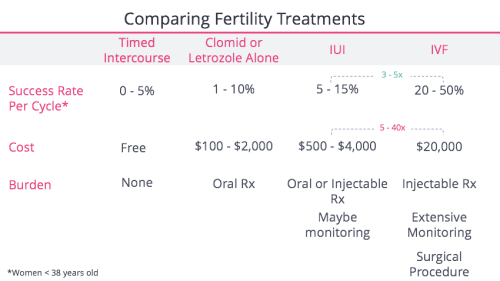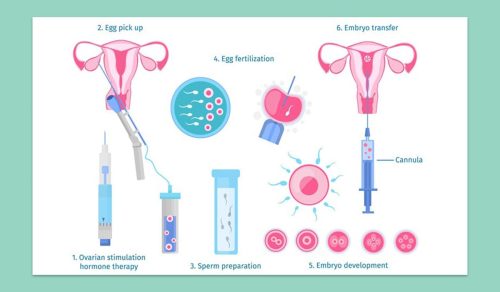How Much Is IVF in Texas?
If you’re thinking about starting a family through in vitro fertilization (IVF) in Texas, one of the first questions that probably pops into your mind is: How much is this going to cost me? It’s a big decision—emotionally, physically, and, yes, financially. IVF can feel like a rollercoaster, and the price tag is a huge part of that ride. Living in Texas, where everything’s bigger (including dreams of parenthood!), you deserve a clear, no-nonsense breakdown of what IVF costs here, plus some insider tips to make it work for your budget.
Texas is home to top-notch fertility clinics, wide-open spaces, and a growing number of families turning to IVF. But costs can vary wildly depending on where you are—say, Houston versus a smaller town like Lubbock—and what your specific needs are. Whether you’re just starting to explore or you’re ready to take the plunge, this guide will walk you through the dollars and cents, plus give you fresh ideas and practical advice you won’t find everywhere else. Let’s dive in!
What’s the Average Cost of IVF in Texas?
IVF isn’t cheap anywhere, but in Texas, you’re looking at a range that’s pretty typical for the U.S., with some local twists. On average, a single IVF cycle in Texas runs between $15,000 and $30,000, including medications. That’s a big window, right? Here’s why: every clinic prices things differently, and your personal situation—like needing extra treatments or donor eggs—can push the total up or down.
For example, in big cities like Dallas or Austin, where clinics often have cutting-edge tech and higher overhead, you might pay closer to $20,000-$25,000 for a basic cycle. Head out to smaller areas, and you could find prices dipping toward $15,000-$18,000. Medications, which aren’t always included in the base price, add another $3,000-$6,000 per cycle, depending on how your body responds to the drugs.
Here’s a quick snapshot of what you’re paying for in a standard IVF cycle:
- Monitoring (ultrasounds, bloodwork): Keeping tabs on your eggs and hormones.
- Egg retrieval: A minor surgery to collect your eggs.
- Fertilization: Mixing eggs and sperm in a lab to create embryos.
- Embryo transfer: Placing the embryo in your uterus.
- Lab fees: The magic behind growing and testing embryos.
That $15,000-$30,000 figure? It’s just the starting line. Most people need two to three cycles to get pregnant, so the total cost could climb to $45,000-$60,000 or more over time. A 2021 study from the American Society for Reproductive Medicine found that only about 35% of IVF cycles result in a live birth for women under 35—success rates drop as age goes up—so planning for multiple tries is smart.
Breaking Down the Costs: What’s Included (and What’s Not)?
When you get a quote from a Texas fertility clinic, it’s like ordering a burger—you need to know if it’s just the patty or the whole meal with fries and a drink. Some clinics bundle everything into one price, while others charge à la carte. Here’s what you’ll typically see:
The Base Price
Most Texas clinics quote a base fee of $10,000-$15,000 for one cycle. This usually covers:
- Ultrasounds and blood tests during stimulation.
- The egg retrieval procedure (with anesthesia).
- Lab work to fertilize eggs and grow embryos.
- The embryo transfer.
Medications
Fertility drugs are a big chunk of the bill—think $3,000-$6,000 per cycle. These include shots to boost egg production and hormones to prep your uterus. Some clinics, like CNY Fertility (which has a location in Texas), negotiate discounts with pharmacies, which could save you a few hundred bucks.
Add-Ons That Add Up
Here’s where things get tricky. Lots of couples need extras, and these aren’t always in the base price:
- ICSI (Intracytoplasmic Sperm Injection): If sperm quality is low, a lab tech injects sperm directly into the egg. Adds $800-$2,500.
- Preimplantation Genetic Testing (PGT): Screens embryos for genetic issues. Costs $3,000-$6,000, plus lab fees.
- Frozen Embryo Transfer (FET): Freezing extra embryos for later use runs $1,000-$2,000, with transfers costing $3,000-$5,000 each.
- Donor Eggs or Sperm: Donor eggs can skyrocket costs to $20,000-$40,000, while sperm is more affordable at $1,000-$1,500 per vial.
A Real Texas Example
Take Houston Fertility Center: their basic IVF cycle starts at $10,000, but with PGT and meds, you’re closer to $17,000-$20,000. Compare that to CARE Fertility in Bedford, where a bundled package might hit $15,000 without meds. Location and clinic reputation play a huge role.
Why Does IVF Cost So Much in Texas?
You might be wondering why IVF feels like it’s priced like a luxury car. It’s not just Texas—it’s the whole process. IVF involves high-tech labs, skilled doctors, and lots of personalized care. In Texas, costs reflect:
- Clinic Overhead: Big cities have higher rent and staff salaries.
- Tech Advances: Fancy tools like INVOcell (a cheaper IVF option) or PGT bump up expenses.
- No State Mandate: Unlike some states, Texas doesn’t require insurance to cover IVF, so clinics set prices based on demand and competition.
A 2024 report from the Stanford Institute for Economic Policy Research highlighted that lack of insurance coverage in states like Texas makes IVF “prohibitively expensive” for lower-income families, driving up out-of-pocket costs.
How Does Texas Compare to Other States?
Texas sits in the middle of the pack nationally. In California or New York, a cycle might hit $25,000-$35,000 because of higher living costs and stricter regulations. Down in Louisiana, you might pay $12,000-$18,000 at some clinics. Here’s a quick look:
| State | Average IVF Cost (Single Cycle) |
|---|---|
| Texas | $15,000-$30,000 |
| California | $20,000-$35,000 |
| New York | $22,000-$35,000 |
| Louisiana | $12,000-$18,000 |
Traveling out of state could save money, but factor in flights and hotels—those add up fast.
Does Insurance Cover IVF in Texas?
Here’s the tough news: Texas doesn’t mandate insurance coverage for IVF. Some states, like Illinois or Massachusetts, require it, but in the Lone Star State, it’s up to your employer’s plan. Group insurance plans must offer IVF coverage as an option, but your boss can say no—and many do. Self-insured or religious employers are exempt, too.
If you’re lucky, your plan might cover diagnostics (like bloodwork or semen analysis) or even meds, shaving off $1,000-$3,000. About 70% of U.S. IVF patients pay out of pocket, per IVF Options, and Texas follows that trend. Call your insurance provider and ask:
- Does my plan cover fertility treatments?
- Are medications included?
- What about add-ons like PGT or ICSI?
Creative Ways to Pay for IVF in Texas
Sticker shock is real, but don’t lose hope! Texans have options to make IVF more doable. Here are some practical ideas:
Financing Plans
Many clinics, like Fertility Center of San Antonio, partner with companies like CapexMD or Lending Club. You could pay $300-$500 a month instead of $20,000 upfront. Interest rates vary, so shop around.
Discount Programs
Some clinics offer “refund programs” like Precision IVF, where you pay a flat fee (say, $25,000) for multiple cycles, and get money back if it doesn’t work. Others have low-cost options for qualifying patients—ask about income-based discounts.
Grants and Scholarships
Texas has its own Fertility Foundation of Texas, offering grants up to $10,000 for Central Texas residents. National programs like Baby Quest or the Tinina Q. Cade Foundation can pitch in, too. Apply early—these fill up fast.
Tax Breaks
Good news: IVF expenses can be tax-deductible if you itemize. If your medical costs exceed 7.5% of your adjusted gross income, you could save hundreds. Chat with a tax pro to max this out.
Travel for Cheaper IVF
Some folks fly to clinics like CNY Fertility (with a Texas outpost) or even Mexico, where cycles can dip below $10,000. Weigh travel costs against savings—it might be worth it.
Interactive Tip:Try this mini budgeting quiz! How much can you set aside monthly for IVF? A) $200 B) $500 C) $1,000. Jot it down and multiply by 12 to see your yearly savings!
Hidden Costs You Might Not Expect
Beyond the obvious, there are sneaky expenses that can catch you off guard. Here’s what to watch for:
- Pre-IVF Testing: Initial consults and tests (like ultrasounds or hysteroscopies) can run $500-$1,500 before you even start.
- Cycle Cancellations: If your body doesn’t respond to meds, you might lose $500-$5,000 per canceled cycle, depending on the clinic’s policy.
- Pregnancy Costs: Success! But now you’re looking at $10,000-$20,000 for delivery (vaginal or C-section) in Texas hospitals, per 2025 estimates from X discussions.
A friend of mine in Austin learned this the hard way—she budgeted for one cycle, but a cancellation and extra testing tacked on $3,000 she didn’t plan for. Build a buffer into your savings!
New IVF Options in Texas: Saving Money with Innovation
Texas clinics are rolling out fresh ways to cut costs without skimping on quality. Here are three under-the-radar options that don’t get enough buzz:
INVOcell: IVF on a Budget
This device lets embryos incubate in your body instead of a lab, slashing lab fees. Houston Fertility Center offers it for as low as $5,000-$9,400 per cycle—half the price of traditional IVF. Success rates are similar for the right candidates (usually younger women with no major fertility issues). A 2023 study in the Journal of Assisted Reproduction and Genetics showed INVOcell’s pregnancy rates hover around 30%-40%, close to standard IVF’s 35%-45% for under-35s.
Mini-IVF: Less Meds, Lower Cost
Mini-IVF uses lower doses of drugs, dropping med costs to $1,000-$2,000 per cycle. Total price? Around $8,000-$12,000. It’s gentler on your body and wallet, though it might yield fewer eggs. Great for women with good ovarian reserve who want a softer approach.
Natural Cycle IVF
No stimulation meds—just your natural egg. Costs dip to $6,000-$10,000 per cycle, but success rates are lower (10%-20%) since you’re banking on one egg. Ideal if you’re wary of hormones or have a tight budget.
These aren’t one-size-fits-all, so talk to your doctor about what fits your body and goals.
Emotional Costs: The Side of IVF No One Talks About
Money isn’t the only price you pay. IVF can be an emotional marathon, and in Texas, where community and family run deep, the stakes feel personal. A 2024 Stanford study found women who don’t conceive after IVF are 48% more likely to need mental health support within five years. Stress, hope, disappointment—it’s a lot.
One Texas mom I spoke to, Sarah from Fort Worth, said, “The $18,000 hurt, but the waiting, the negative tests—that broke me more.” She leaned on free support groups through Resolve.org and her church. Don’t skip self-care: therapy, yoga, or even a night out with friends can keep you grounded.
Interactive Poll:What’s your biggest IVF worry? A) Cost B) Emotional toll C) Success odds. Share in your head—or with a friend—and see how it aligns with your plan!
Success Rates vs. Cost: Is It Worth It?
You’re not just buying a procedure—you’re investing in a chance at a baby. In Texas, success rates mirror national averages:
- Under 35: 35%-40% per cycle.
- 35-37: 25%-30%.
- 38-40: 15%-20%.
- Over 40: 5%-10%.
Top clinics like Texas Fertility Center boast slightly higher rates thanks to advanced tech, but they charge more, too. Is pricier better? Sometimes. A $25,000 cycle with a 40% shot might beat a $15,000 one at 20%—fewer cycles, less spent overall. Do the math: Cost ÷ Success Rate = Cost per Baby.
Unique Texas IVF Stories: Real People, Real Costs
Let’s get personal. Meet Jenna, a 32-year-old teacher from San Antonio. She and her husband spent $42,000 over two cycles at Fertility Center of San Antonio. First cycle failed—$18,000 gone. Second cycle, with PGT and FET, worked—$24,000 more. “We took out a loan and skipped vacations,” she said. “But holding our son? Priceless.”
Then there’s Miguel from El Paso, who opted for INVOcell at $7,000 per cycle. Two tries later ($14,000 total), he’s expecting twins. “It was a gamble, but it paid off,” he told me. These stories show cost isn’t one-size-fits-all—it’s your journey.
Latest Trends: What’s Hot in Texas IVF Right Now?
X posts in 2025 show Texans buzzing about affordability and access. A March thread pegged surrogacy at $50,000-$200,000, spotlighting how out-of-reach that is for most. Google Trends data from early 2025 shows spikes in “low-cost IVF Texas” and “IVF financing options,” signaling folks want cheaper paths to parenthood.
Clinics are listening. More are offering INVOcell or mini-IVF, and telehealth consults are cutting travel costs for rural Texans. A 2024 Grand View Research report predicts the global IVF market will hit $37.4 billion by 2030, with Texas riding the wave thanks to innovation and demand.
5 Steps to Plan Your IVF Budget in Texas
Ready to crunch numbers? Here’s a step-by-step guide:
- Get a Quote: Call 2-3 clinics for base prices and add-on costs.
- Check Insurance: Confirm what’s covered—don’t assume!
- Estimate Meds: Budget $4,000-$6,000 per cycle as a safe bet.
- Plan for Multiple Cycles: Save for 2-3 rounds ($40,000-$60,000 total).
- Explore Aid: Apply for grants or financing to ease the load.
Pro Tip: Start a dedicated IVF savings jar—$20 a week adds up to $1,040 in a year!
The Future of IVF Costs in Texas: What’s Coming?
Costs might creep up—think 5%-10% yearly, per FertilityIQ—but innovation could balance it out. If INVOcell catches on or insurance laws shift (fingers crossed!), prices could stabilize. A 2025 X debate hinted at political pushes for coverage, but nothing’s set yet. Stay tuned—Texas might surprise us.
Wrapping Up: Your IVF Journey Starts Here
IVF in Texas isn’t just about dollars—it’s about building your family. You’re looking at $15,000-$30,000 per cycle, maybe $50,000 total, but with smart planning, it’s within reach. From hidden costs to new tech like INVOcell, you’ve got more control than you think. Talk to clinics, tap into grants, and lean on your community. Your dream’s worth it—and in Texas, we don’t back down from a challenge.
Final Interactive Twist:Picture your future family. What’s one thing you’d tell your future kid about this journey? Write it down—it’s your first step toward making it real.




